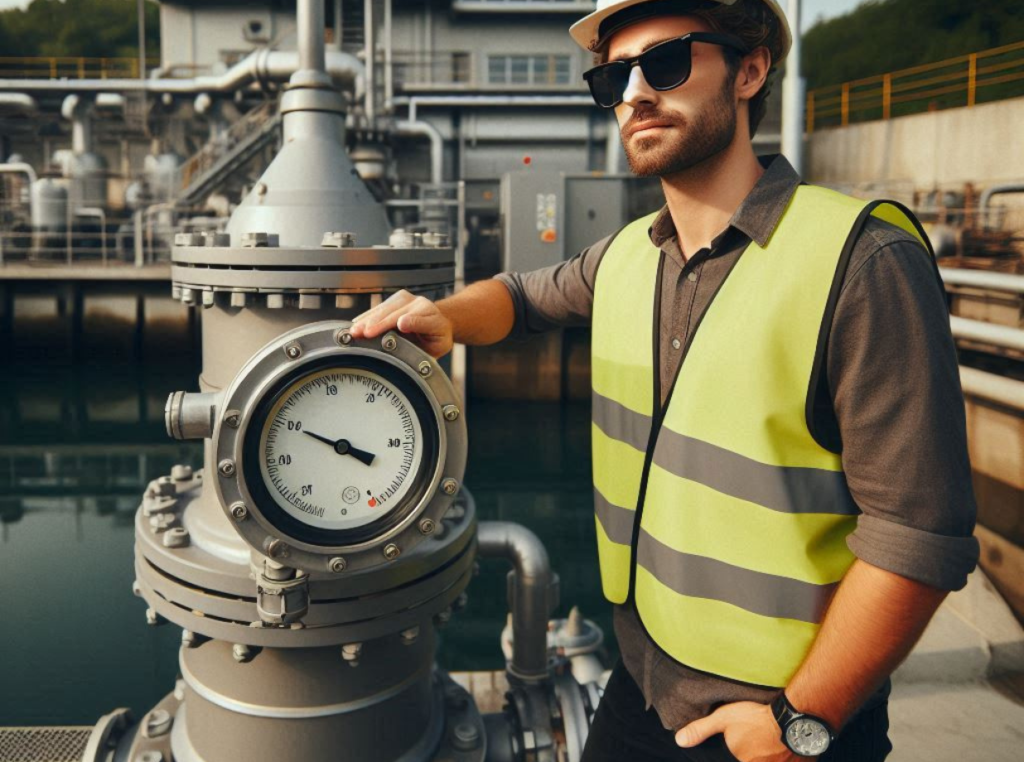Have you ever considered what happens to the water we use every day once it flows down the drain? You might be surprised to learn just how complex and elaborate the process of managing wastewater is. In the grand scheme of urban living, wastewater management plays a crucial role in maintaining public health and environmental quality.
Understanding Modern Wastewater Management

You may think of wastewater simply as a byproduct of households, industries, and businesses, but in reality, it’s a complex and ever-changing mix that needs to be carefully managed. The essence of modern wastewater management lies not only in treating the water but also in handling the flow efficiently from the point of generation to the point of discharge or reuse.
To effectively manage wastewater, engineers and planners rely heavily on various flow control technologies designed to regulate volumes, rates, and directions of flow. By doing so, they ensure that wastewater systems operate efficiently, reducing the risks of overflows, blockages, and other operational challenges.
The Importance of Flow Control Technologies
Flow control technologies are instrumental in steering wastewater through the maze of pipes and treatment processes. From the moment wastewater leaves a home or business, it’s subject to various control measures that guide its journey towards treatment and eventual discharge. These technologies not only help maintain the integrity of the entire system but also enhance its reliability and efficiency.
Weirs
Weirs are barriers built across open channels or rivers to control the flow of water. They are a fundamental part of wastewater management, allowing you to measure flow rates accurately and control the water level in treatment plants. Weirs come in different shapes and sizes, each suited for specific applications. For instance, a V-notch weir is often used for small flow measurements because of its high accuracy at low flow rates.
| Type | Application | Advantages |
|---|---|---|
| V-notch weir | Small flow measurement | High accuracy at low flows |
| Rectangular | Large flow measurement | Simplicity and ease of installation |
Flumes
Similar to weirs, flumes are used to measure and control the flow of water. However, unlike weirs, flumes do not restrict the flow but rather guide it through a channel with a defined shape, which enables the determination of flow rate based on the water level. Parshall flumes, for example, are widely used in wastewater applications due to their ability to handle large flow variations and ease of maintenance.
Orifices
Orifices are openings or holes in a pipe or tank that control the rate of flow by restricting the cross-sectional area through which the fluid can pass. Adjustable orifices allow for fine-tuning, making them highly valuable in precise flow control scenarios, such as equalization basins, where maintaining uniform flow rates is critical.
Pumps
Pumps are the workhorses of wastewater management, propelling water through the system when gravity alone isn’t enough. There are different types of pumps, such as centrifugal pumps and positive displacement pumps, each suited for specific applications. Selection depends on factors like flow rate, head (the height the water needs to be lifted), and the nature of the wastewater being pumped.
Gates
Gates are barriers that can be raised or lowered to control water flow in a channel. They are often used in conjunction with weirs and flumes to regulate flow into treatment plants or specific sections of the wastewater system. There are several types, including slide gates and radial gates, each with its own operational characteristics.
Valves
Valves are devices that regulate, direct, or control the flow of water by opening, closing, or partially obstructing various passageways. In wastewater management, different types of valves, such as butterfly valves, gate valves, and ball valves, are used to control the flow in pipelines, ensuring smooth and efficient operation.
Flow Meters
Flow meters measure the volume or mass of a fluid moving through a pipe. They are fundamental in process monitoring and control, providing real-time data on flow rates which is crucial for maintaining the balance and efficiency of treatment processes. Common types include electromagnetic flow meters, ultrasonic flow meters, and differential pressure meters.
| Type | Measurement Method | Best Use Case |
|---|---|---|
| Electromagnetic flow meters | Measures velocity of conductive fluid | Accurate in various conditions |
| Ultrasonic flow meters | Uses ultrasonic waves | Non-intrusive, suitable for large pipes |
| Differential pressure meters | Measures pressure drop across an orifice | Cost-effective for small pipes |
Level Sensors
Level sensors detect the height of water in tanks, basins, or channels, providing critical information for flow control. They help in regulating pump operations and valve settings, ensuring that water levels remain within desired ranges. Various technologies, such as float switches, ultrasonic sensors, and radar sensors, are used depending on the application’s needs.
SCADA Systems
SCADA (Supervisory Control and Data Acquisition) systems are key in modern wastewater management, offering centralized monitoring and control of the entire system. They gather data from sensors, meters, and valves, allowing operators to monitor system status in real-time and make informed decisions to optimize performance and respond to issues promptly.
Variable Frequency Drives (VFDs)
VFDs are used to control the speed and torque of electric motors by varying the frequency and voltage of the power supply. In wastewater systems, VFDs are often applied to pumps, allowing for precise control of flow rates and significant energy savings compared to fixed-speed pumps.
Gravity Sewers vs. Force Mains
In navigating the complexities of wastewater flow, understanding the difference between gravity sewers and force mains is essential.
Gravity Sewers
Gravity sewers rely on the natural gradient or slope to transport wastewater. These systems are cost-effective and energy-efficient, as they use the earth’s gravitational pull to move water without the need for mechanical pumping, except in situations where elevations present challenges. They are typically used in residential and commercial areas with favorable topography.
Force Mains
Force mains, on the other hand, are pressurized pipelines that carry wastewater using pumps. These are necessary in flat or topographically challenging regions where gravity flow isn’t feasible. Force mains allow for greater flexibility in system design and are crucial for overcoming obstacles such as hills, valleys, and long distances.
Flow Equalization Basins
Flow equalization basins are storage facilities used to balance out fluctuations in wastewater flow rates. By temporarily holding excess water during peak flow periods and releasing it during low-flow times, these basins help maintain a consistent flow to the treatment plant, enhancing overall process efficiency and preventing system overloads.
Overflow Structures
Overflow structures are designed to provide a controlled outlet for excess wastewater during extreme flow events, such as heavy rainfall or system blockages. These structures, including relief sewers and stormwater overflows, direct surplus water to designated areas to prevent sewer backups and flooding, thereby protecting public health and infrastructure.
Sluice Gates
Sluice gates are adjustable gates used to control the flow of water in channels and pipelines. They can be raised or lowered to regulate the amount of water passing through, making them invaluable in managing flow rates and water levels in treatment plants and drainage systems.
The Integrated Role of Flow Control Technologies

When these technologies work in concert, they create a robust and flexible wastewater management system that can handle varying conditions and demands. For instance, flow meters and level sensors provide essential data that inform the operation of pumps, valves, and sluice gates. Meanwhile, SCADA systems integrate this information, enabling operators to manage the entire network remotely and efficiently.
By using a combination of gravity sewers and force mains, systems can be designed to leverage the strengths of both, optimizing energy use and operational costs. Flow equalization basins further enhance this by evening out the flow, making the system more resilient to fluctuations and surges.
Challenges and Innovations
Despite the significant advancements in flow control technologies, wastewater management still faces numerous challenges. Aging infrastructure, population growth, climate change, and stricter environmental regulations all contribute to the complexity of managing wastewater effectively.
Climate Change
As climate change leads to more extreme weather events, wastewater systems must be adaptable and resilient. This means designing infrastructure that can handle both droughts and intense rainfall, preventing overflows and ensuring reliable service even under stress.
Population Growth
Population growth puts additional strain on existing wastewater systems, requiring expansions and upgrades to accommodate increased volumes. In densely populated areas, finding space for new infrastructure can be challenging, necessitating innovative solutions such as underground facilities or retrofitting existing systems.
Aging Infrastructure
Many urban areas have wastewater systems that are decades old, with components nearing the end of their useful life. Upgrading these systems is crucial to prevent failures and ensure reliable performance. This often involves integrating modern flow control technologies with existing infrastructure, balancing costs, and benefits.
Future Directions
The future of wastewater management lies in further integrating advanced technologies and innovative approaches to address emerging challenges. Some key areas of development include:
Smart Water Networks
Smart water networks leverage IoT (Internet of Things) technologies to create more responsive and adaptive systems. By connecting sensors, flow meters, valves, and pumps to a centralized network, operators can gain real-time insights and predictive analytics, enabling proactive maintenance and optimization.
Energy Efficiency
With energy being a significant cost in wastewater management, improving energy efficiency is a priority. This includes the adoption of energy-saving technologies like VFDs and exploring alternative energy sources such as biogas generated from wastewater treatment processes.
Resource Recovery
Modern wastewater treatment plants are moving towards becoming resource recovery facilities. This involves extracting valuable resources like nutrients, biogas, and clean water from wastewater, turning what was once considered waste into beneficial products. Advanced flow control technologies play a critical role in optimizing these processes.
Decentralized Systems
In some regions, decentralized wastewater management systems offer a viable alternative to traditional centralized networks. These systems treat wastewater closer to the source, reducing the load on large treatment plants and providing greater flexibility in managing flows.
Wastewater Flow Control Technologies: Resources and Links
Government and Regulatory Bodies
- U.S. Environmental Protection Agency (EPA) – Wastewater Technology
- European Environment Agency – Water and Marine Environment
Professional Organizations
Academic and Research Institutions
Industry Resources
Technical Guides and Standards
- Hydraulic Institute – Pump Standards
- American Society of Civil Engineers (ASCE) – Wastewater Treatment Plant Design
Remember to verify the credibility and current status of these resources before use. For the most up-to-date information, consider contacting local water management authorities or consulting with wastewater engineering professionals.
